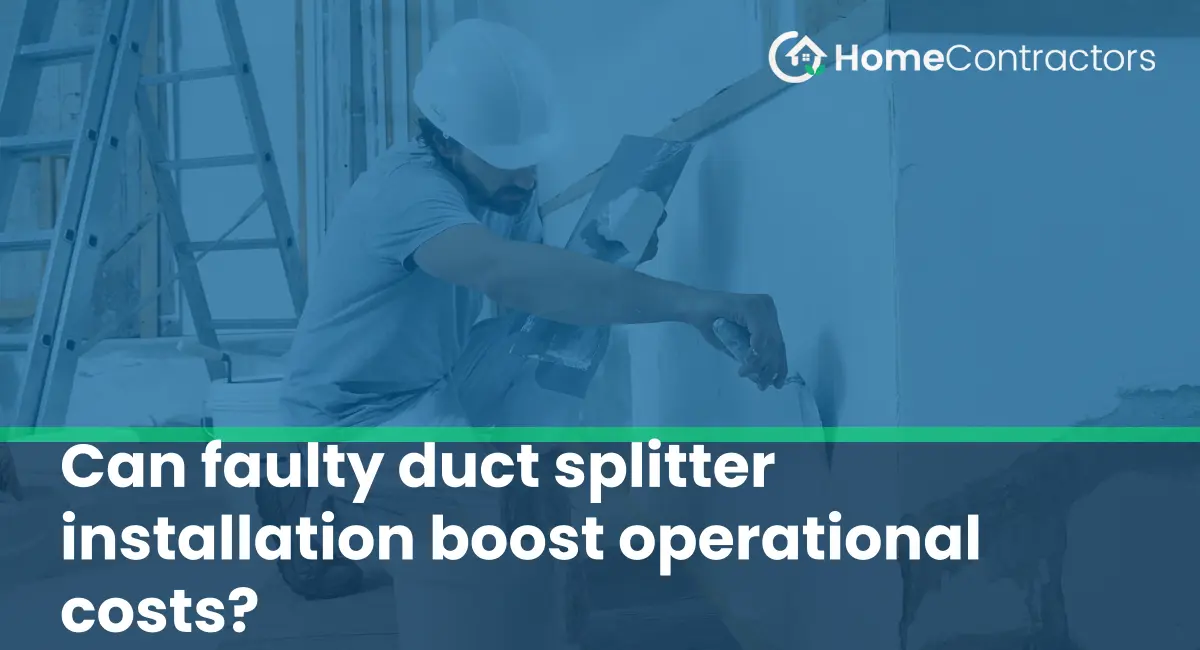Proper installation of duct splitters in HVAC systems is crucial for efficient and cost-effective operations. When installed incorrectly, these devices can negatively affect the overall performance of the system, leading to increased operational costs. In this article, we will explore how faulty duct splitter installation can impact energy efficiency, air quality, and maintenance expenses.
Energy Efficiency:
1. Impaired Airflow Distribution:
One of the primary functions of duct splitters is to evenly distribute conditioned air throughout a building. However, if not installed properly, these devices can cause imbalances in airflow. Uneven distribution can lead to certain areas receiving more or less airflow than necessary, resulting in energy wastage. The system may need to work harder to compensate for these imbalances, leading to increased energy consumption and subsequent expenses.
2. Increased Air Leakage:
Faulty installation of duct splitters can also lead to increased air leakage. A poorly sealed or improperly aligned splitter can cause air to escape from the ducts before reaching the intended areas. This not only affects the system’s ability to deliver conditioned air efficiently but also allows for the infiltration of unconditioned air from outside. As a result, the HVAC system must work harder to maintain desired temperatures, leading to elevated energy usage and higher operational costs.
Air Quality:
1. Insufficient Ventilation:
Improper installation of duct splitters can impact the ventilation effectiveness of an HVAC system. Inadequate airflow can hinder the flushing out of contaminants, such as dust, allergens, and pollutants, from indoor spaces. This can result in poor air quality, which may negatively impact the health and comfort of occupants. Moreover, pollutants circulating in the air can affect sensitive equipment, leading to potential maintenance or replacement costs.
2. Increased Contamination Risk:
In addition to inadequate ventilation, faulty installation can increase the risk of contamination within the HVAC system. Improper seals or misaligned duct splitters can create gaps and spaces where dust, debris, or microbial growth can accumulate. This buildup can compromise the air quality and necessitate more frequent cleaning or maintenance, leading to additional costs and potential equipment downtime.
Maintenance Expenses:
1. Reduced Equipment Lifespan:
Faulty duct splitter installation can put undue strain on the entire HVAC system. Increased energy consumption and compromised air quality can lead to more wear and tear on the equipment. The system may require more frequent maintenance and repairs, ultimately reducing its overall lifespan. The costs associated with these necessary fixes can quickly add up, impacting the operational budget.
2. Rectification Costs:
If shortcomings in duct splitter installation are identified post-installation, rectifying the issue can incur significant expenses. Correcting misaligned or poorly sealed splitters may require dismantling portions of the ductwork, resulting in labor-intensive work and associated costs. Moreover, rectifying the problem may necessitate the assistance of professional technicians or contractors, further increasing expenditure.
Proper installation of duct splitters is essential for optimizing energy efficiency, ensuring good air quality, and minimizing maintenance expenses. Faulty installation can disrupt airflow distribution, increase air leakage, compromise ventilation effectiveness, and escalate contamination risks. These issues can result in heightened energy consumption, poor indoor air quality, and additional maintenance expenses. By investing in professional and expert installation, building owners can avoid these problems and maximize the cost-efficiency of their HVAC systems.
